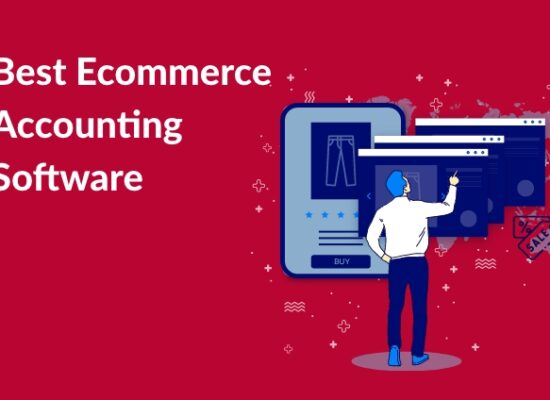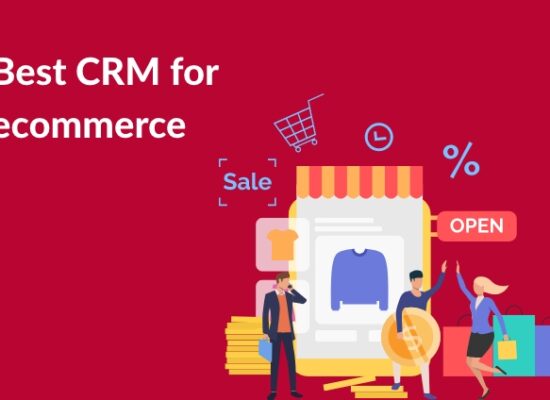If you’re the owner of an ecommerce business or want to launch your very own online store, you must ask yourself. Do you know the factors that impact your ecommerce sales? Are you aware of the strategies that you need to adopt in order to succeed in this dynamic competitive market place?
Ecommerce is one of the rapidly expanding industries worldwide. Globally ecommerce sales are estimated to touch $6.4 trillion in 2024. It is surely difficult to stand out and boost your sales when there are so many ecommerce companies. To draw in customers and to hold on to your target customer base, you must continuously innovate and improve your tactics. You have to keep yourself updated regarding the ongoing ecommerce growth trends.
In this guide, we will share with you some specific proven strategies that will definitely help you enhance your ecommerce sales.
Read More : Top Ecommerce Tools Every Entrepreneur Should Use
Importance of Sales in Ecommerce

Sales are more than just transactions in the world of e-commerce, they are actually the foundation of the whole business. The main indicator of an e-commerce venture’s viability and success is its sales volume. They represent not only the creation of income but also the success of marketing plans, the caliber of goods or services provided and client satisfaction.
Ecommerce sales offer more insights about competitive positioning, market relevance and brand strength than just direct financial advantages. Sales also support the development and growth of internet companies, enabling them to make investments in infrastructure and innovation to remain competitive in the quickly changing digital market.
In a world where purchasing online is becoming more and more common, e-commerce sales are crucial for companies to prosper and last. In addition to boosting revenue, they help companies accomplish their goals, connect with more clients and provide value to them. Overall, e-commerce sales are the foundation of success, determining the course and significance of enterprises in the digital era.
Read More : Ecommerce Marketing Strategies that Drive Results
Effective Ecommerce Sales Strategies to Skyrocket Your Business
A thorough plan designed to boost sales and revenue for an online store is included in an ecommerce sales strategy. It includes a number of methods used to draw in prospective clients, interact with them and eventually persuade them to become paying customers.
The following is an outline of the essential elements of an ecommerce sales strategy
1. Market research:
Recognize the needs, tastes and buying patterns of your target market. To effectively adapt your offers, identify market trends, competition strategies and holes in the market.
2. Price and Product Selection:
Create a product line that responds to the needs and interests of your target market. Maintain perceived value and profitability while offering competitive prices.
3. Website Optimization:
Develop an easy-to-use website with a smooth checkout process, clear product descriptions, intuitive navigation and excellent photos. To accommodate the increasing number of mobile shoppers, optimize for mobile devices.
4. Search Engine Optimization (SEO):
By making your product pages, metadata and content more optimized, you can raise your website’s exposure in search engine results pages. To boost organic traffic, concentrate on pertinent keywords, produce insightful content and establish high-quality backlinks.
Read More : 6 Best Ecommerce platform for SEO
5. Content Marketing:
Create interesting and educational content such as blog articles, videos and infographics to draw in and inform prospective clients. Utilize content to highlight items, solve client problems and become a leader in your sector.
6. Social Media Marketing:
Make use of social media channels to interact with your audience, increase brand recognition and increase e-commerce store traffic. To increase sales, produce engaging content, manage focused advertising efforts and encourage community involvement.
7. Email Marketing:
Use customised email campaigns to establish and maintain relationships with your consumers. To promote recurring business and foster greater client loyalty, send out individualised information, product recommendations and promotional offers.
8. Customer Service and help:
Offer top-notch customer help via a variety of channels including phone, email and live chat. Respond to consumer questions right away, provide efficient solutions to problems and work to go above and beyond their expectations.
9. Data analytics and optimization:
Track and evaluate important metrics all the time including conversion rates, average order values and client acquisition costs. Utilise data analysis insights to enhance the entire purchasing experience, optimise marketing efforts and improve website functionality.
10. Experimentation:
Determine what works best for your target audience by experimenting with various techniques, tactics and promotional offers. Improve your e-commerce sales strategy on a constant basis using market feedback and data-driven insights.
Read More : 9 Best Ecommerce Platforms for Small Business
Ecommerce Growth Strategies to Stay Ahead

A company’s long-term plan for growing its online sales and market share is outlined in its e-commerce growth strategy. It entails the thoughtful development and implementation of numerous efforts with the goals of boosting sales, attracting new clients and optimising profitability.
The following summarizes the essential elements of a growth strategy for e-commerce
1. Market Expansion:
Find new niches or target markets to enter. This could entail reaching out to new geographic areas or focusing on clientele or demographic groups that complement your offerings.
2. Product Diversification:
Increase the variety of products you offer to meet the demands and preferences of a wider spectrum of clients. Introduce new product lines, variants or supplementary goods that appeal to various market segments and enhance your current offerings.
3. Optimized Customer Acquisition:
Launch focused advertising efforts to draw visitors to your online store. Reach and interact with potential customers through a variety of channels including influencer collaborations, content marketing, social media advertising and search engine optimization (SEO).
4. Conversion Rate Optimization (CRO):
To increase the proportion of website visitors that complete a purchase, concentrate on streamlining the conversion funnel. This could entail improving product pages, streamlining the checkout process, doing A/B testing of website elements and putting compelling call-to-action (CTA) methods into practice.
5. Loyalty and Customer Retention Programs:
Make investments in techniques to keep current clients and promote referrals. To build enduring relationships with your audience, put loyalty programs into place, provide special discounts or prizes and deliver first-rate customer service.
6. Mobile Optimization:
Make sure your e-commerce website is mobile-friendly given the rise in popularity of mobile buying. Having a smooth mobile purchasing experience requires an adaptable design, quick loading speeds and easy navigation.
7. Collaborations and Partnerships:
To broaden your consumer base and increase your reach consider collaborating with influencers or other companies in your sector. Co-marketing initiatives, affiliate relationships, cross-promotions and cooperative product launches are a few examples of collaborations.
8. Data-Driven Decision Making:
Use data analytics software to learn about market trends, consumer behaviour and performance indicators. Utilise data to guide strategic choices, pinpoint areas in need of development and maximise the effectiveness and efficiency of your e-commerce operations.
9. Customer input and Iteration:
To better understand the needs and preferences of your customers, get their input via surveys, reviews and other means. Make sure your goods, services and marketing tactics are always in line with what customers expect by using this feedback to iterate on them.
10. Continuous Innovation:
Adopt innovation and keep up with new developments in e-commerce trends and technologies to stay one step ahead of the competition. Try out new features, technology and business strategies to set your company apart and spur expansion in the ever changing digital market.
Read More: 8 Key Software Tools for Ecommerce Operations
Tips for Boosting Ecommerce ROI
Implementing strategic approaches aimed at optimising profitability and efficiency across many parts of your online business is necessary to boost ecommerce ROI. The following tactics can help you improve your e-commerce return on investment
- Optimise product pages, streamline the checkout process and use compelling calls-to-action (CTAs) to drive sales to increase your ecommerce website’s conversion rate.
- Set aside some of your marketing budget for sponsored advertising platforms like social media ads, Google Ads and retargeting campaigns.
- To increase return on ad spend (ROAS), target particular audience segments and optimise your advertising efforts.
- Investing in search engine optimization (SEO) techniques will increase the visibility of your website in search engine results pages (SERPs).
- Optimise your website’s structure, metadata and product descriptions to increase organic traffic and boost conversion rates.
- Use flash sales, discounts and time-limited promotions to encourage purchases and boost sales volume.
- To keep things profitable, track the effectiveness of marketing initiatives and make necessary adjustments to price plans.
- Create specialised email marketing campaigns to interact with consumers, advertise goods and encourage recurring purchases.
- To increase efficacy and return on investment, personalise email content, segment your list and automate email sequences.
- Review and modify product prices frequently to maintain competitiveness and optimise profits.
- To choose the best pricing plan for your items take into account price testing, bundle discounts and dynamic pricing tactics.
- Always keep an eye on trending ecommerce products to increase potential customers.
- To cut expenses and boost overall efficiency, find inefficiencies in your e-commerce operations and streamline procedures.
- To boost profitability, automate tedious processes, improve inventory control and bargain better prices with suppliers.
- Your clients should have an amazing shopping experience if you want to promote brand loyalty and repeat business.
- Make an investment in customer support, provide adaptable shipping and return policies and customise the online shopping experience according to the tastes of your clients.
- Try out several marketing channels, methods and approaches to see which ones are most effective for your e-commerce company.
- To maximise ROI over time, test and refine your strategies frequently in response to client feedback and performance indicators.
- Track key performance indicators (KPIs), keep an eye on consumer behaviour and spot optimization opportunities with data analytics solutions.
- To increase ROI and make data-driven decisions, you must analyse website statistics, customer reviews and sales data.
Key takeaways from ecommerce sales and its growth strategy
Ecommerce sales can only be increased through the use of strategic tactics that prioritize customer involvement, user experience optimization and effective marketing techniques. This calls for a multidimensional strategy. Building relationships with customers by attentive customer service, loyalty plans and tailored communications promotes trust and repeat business.
Using email marketing campaigns and social media platforms to their full potential also increases brand awareness and increases visitors to the e-commerce website. Ultimately, companies may foster sustainable growth and take advantage of the enormous potential of the ecommerce landscape by consistently modifying their strategy in response to market movements and consumer behavior.
FAQ’s
How can I make my ecommerce website’s user experience better?
You can improve user experience by making sure your website loads quickly, making sure it’s responsive to mobile devices, streamlining the navigation and adding a user-friendly search feature.
What tactics can I employ to get more people to visit my online store?
You can increase traffic by using email marketing campaigns, social media interaction, content marketing and search engine optimization (SEO) strategies. Using platforms for paid advertising and collaborating with influencers are more ways to boost exposure and attract relevant traffic.
How can customer service contribute to higher e-commerce sales?
Delivering outstanding customer service is essential to fostering loyalty and trust. Provide customers with timely and helpful support by phone, email and live chat. Respond to their questions and concerns right away to improve their purchasing experience.
How can I lower the percentage of cart abandonment on my online store?
Simplify the checkout process, provide guest checkout options, show clear pricing, offer several payment methods and use cart recovery emails to remind customers of unfinished transactions to reduce cart abandonment.



